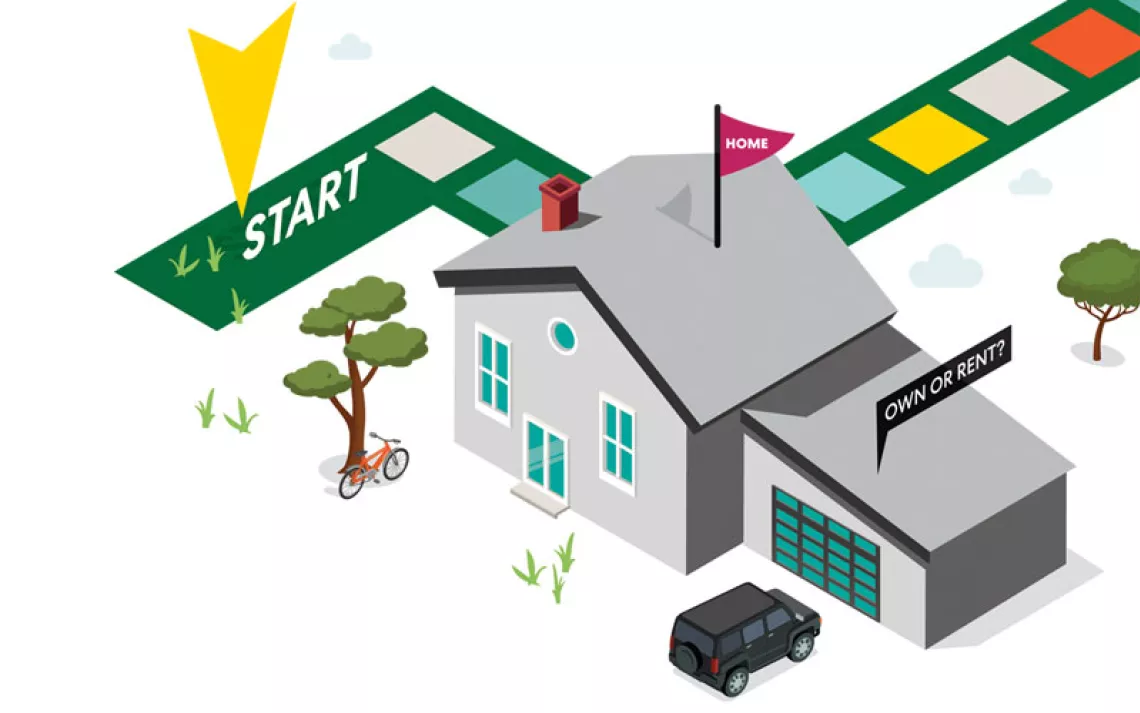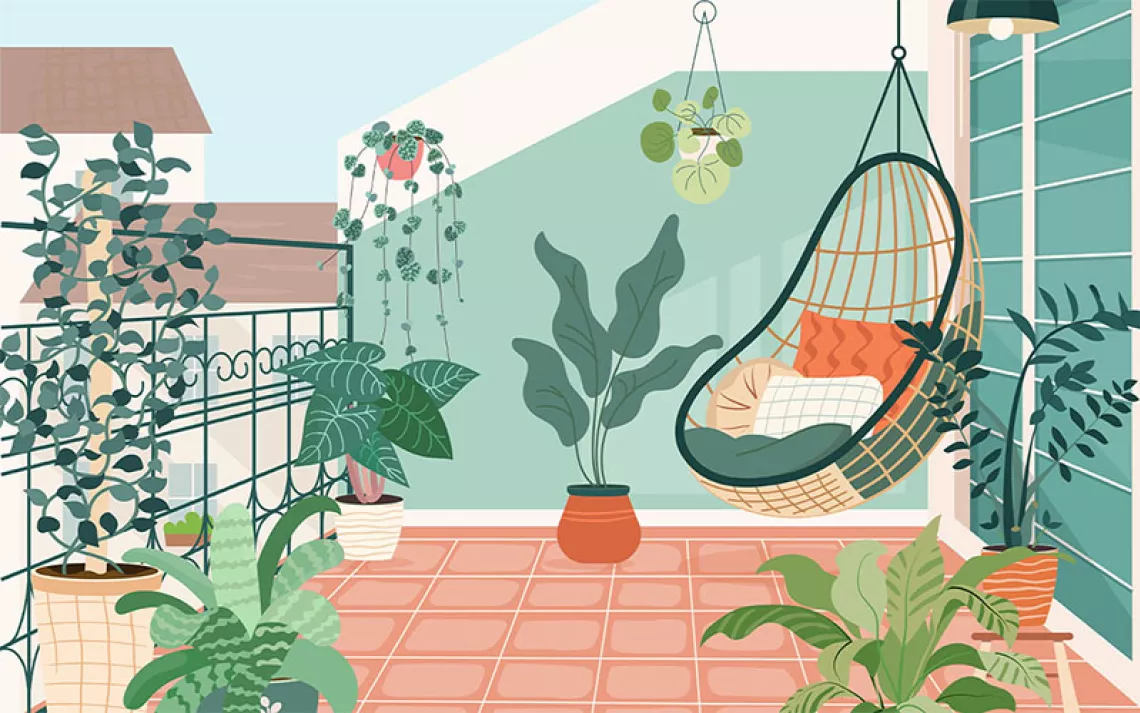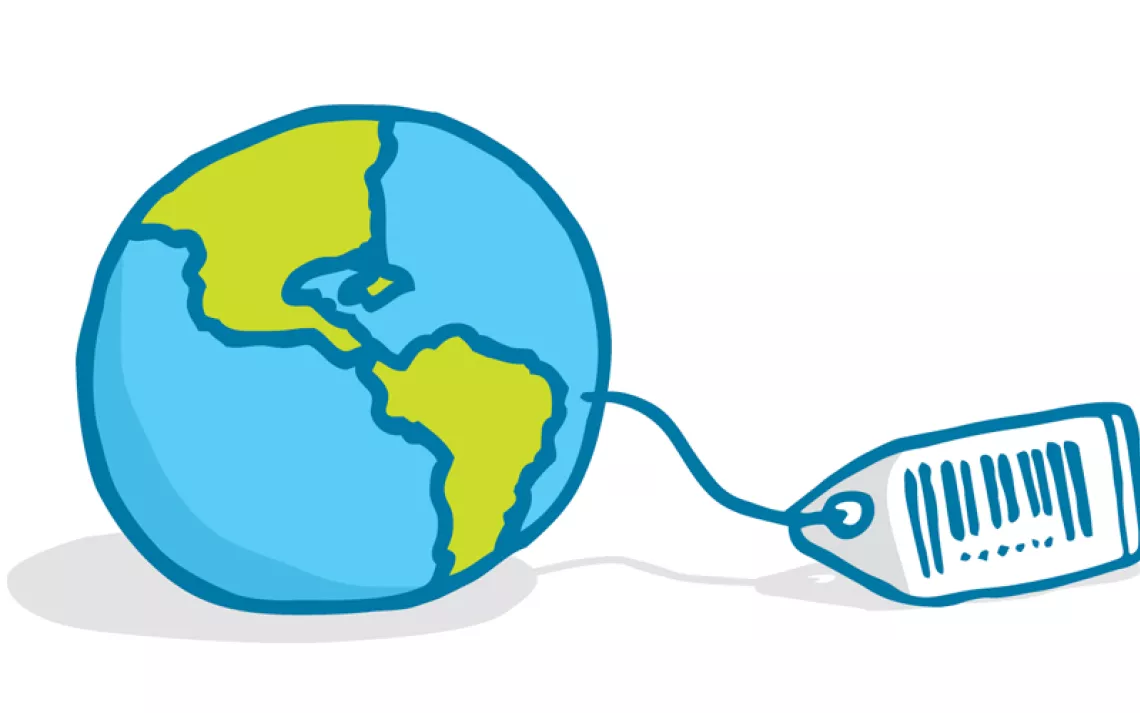Green Death
Four Better Burials

Photo by Chiyacat/iStock.
Eco-friendliness is not only for the living. You’ve lived a green lifestyle—why turn into toxic waste after your death? Each year, according to the Funeral Consumers Alliance, standard U.S. burials inter 30 million board feet of hardwoods, 90,000 tons of steel, and 17,000 tons of copper and bronze. Inside are corpses full of embalming fluids containing cancer-causing chemicals like formaldehyde, glutaraldehyde, and phenol, which are released into the earth when the casket eventually biodegrades and the body slowly decomposes. The Property and Environment Research Center says that we bury more than 5 million gallons of toxic embalming fluid each year.
Cremation isn’t any better. It requires a great deal of energy—burning a single body requires about two SUV tanks worth of fuel. Instead of polluting the ground, cremation pollutes the air: In addition to climate-warming carbon dioxide, crematoria release dioxin and mercury (from the vaporization of tooth fillings) into the atmosphere.
Happily, there is a wide variety of options for those who want to stay green even after their time is up.
Green burial
Green burial is similar to a standard burial, just without the environmental damage. It’s increasingly popular: Today there are more than 300 eco-friendly burial providers in the United States, up from only a dozen in 2008. Green burial involves switching out the standard embalming fluids for fluids made of essential oils. The traditional hardwood and metal coffin is replaced by one made of Green Burial Council-certified biodegradable cedar. Alternatively, bodies can be wrapped in a simple shroud or burlap sack, which will allow quicker and more natural decomposition.
The Green Burial Council is a leading organization in the world of eco-friendly burials. It certifies funeral homes, cemeteries, and product manufacturers, setting the standards for environmental interment. The council also focuses on education and advocacy; its aim, according to the Council’s website, is “to make ‘green’ or ‘natural’ burial the new standard within industry.”
Resomation
For those who prefer not to be buried at all, there is an alternative to cremation called resomation or “bio-cremation,” which involves disposing of human remains through alkaline hydrolysis, a water-based process. The body is placed in a wool coffin, which in turn is placed inside a pressurized metal chamber. Heated water and potassium hydroxide are then used to liquefy the remains, leaving only bones behind. These are pulverized and returned to the family in an urn, similar to the flame-cremation processes. The chemical liquid used in this process is safe to flush into the sewage system. Resomation releases no chemicals into the air, and requires 80 percent less energy than standard cremation.
Composting
OK, this may not be for everyone, but it is possible to compost a corpse in an eco-friendly manner. This is not something you do in your backyard compost bin along with the fruit and vegetable scraps, though. The Urban Death Project, which is pioneering the process of “recomposition,” says it “utilizes the process of composting to safely and gently turn our deceased into soil, creating a meaningful, equitable, and ecological option for the disposition of the dead. It is a solution to the overcrowding of city cemeteries and the unsustainable methods we currently use.” Bodies wrapped in linen shrouds are placed at the top of a three-story tower, which is filled with bodies and “high-carbon materials.” The process happens over the span of a few months through aerobic decomposition and microbial activity, leaving only a rich compost.
Mushroom Suit
An alternative method of turning yourself into a soil amendment is the Infinity Burial Suit. Researcher Jae Rhim Lee introduced the notion in a 2011 TED talk: The deceased is clothed in a biodegradable one-piece garment sewn with mushroom-infused thread. “The mushroom spores act to cleanse the body of many toxins and gently return the it to the earth,” says the website for her company, Coeio. According to company co-founder Mike Ma, “This technology speeds the return to earth through decomposition, it remediates toxins we accumulate over a lifetime, and it speeds nutrient delivery back to plants.” The corpse wearing the suit can be buried in an eco-coffin or just in the suit.
Lee believes the mushroom suit is the greenest of green burials. “Green or natural burials, which don't use embalming, are a step in the right direction,” she says in her TED talk, “but they don't address the existing toxins in our bodies.” While even Lee admits that the concept is a little out there, it is a corpse disposal method that allows the body to join the earth in a way that actually benefits the environment.
It’s important to note that many of these practices are controversial and may not be legal everywhere. Resomation, for example, is legal for use on humans in only eight states. The Urban Death Project’s corpse composting method, which is being piloted at Washington State University, is still under development. Coeio’s Infinity Burial Suit, while completely legal and available for order, is also still being tested. So don’t die tomorrow.
 The Magazine of The Sierra Club
The Magazine of The Sierra Club



